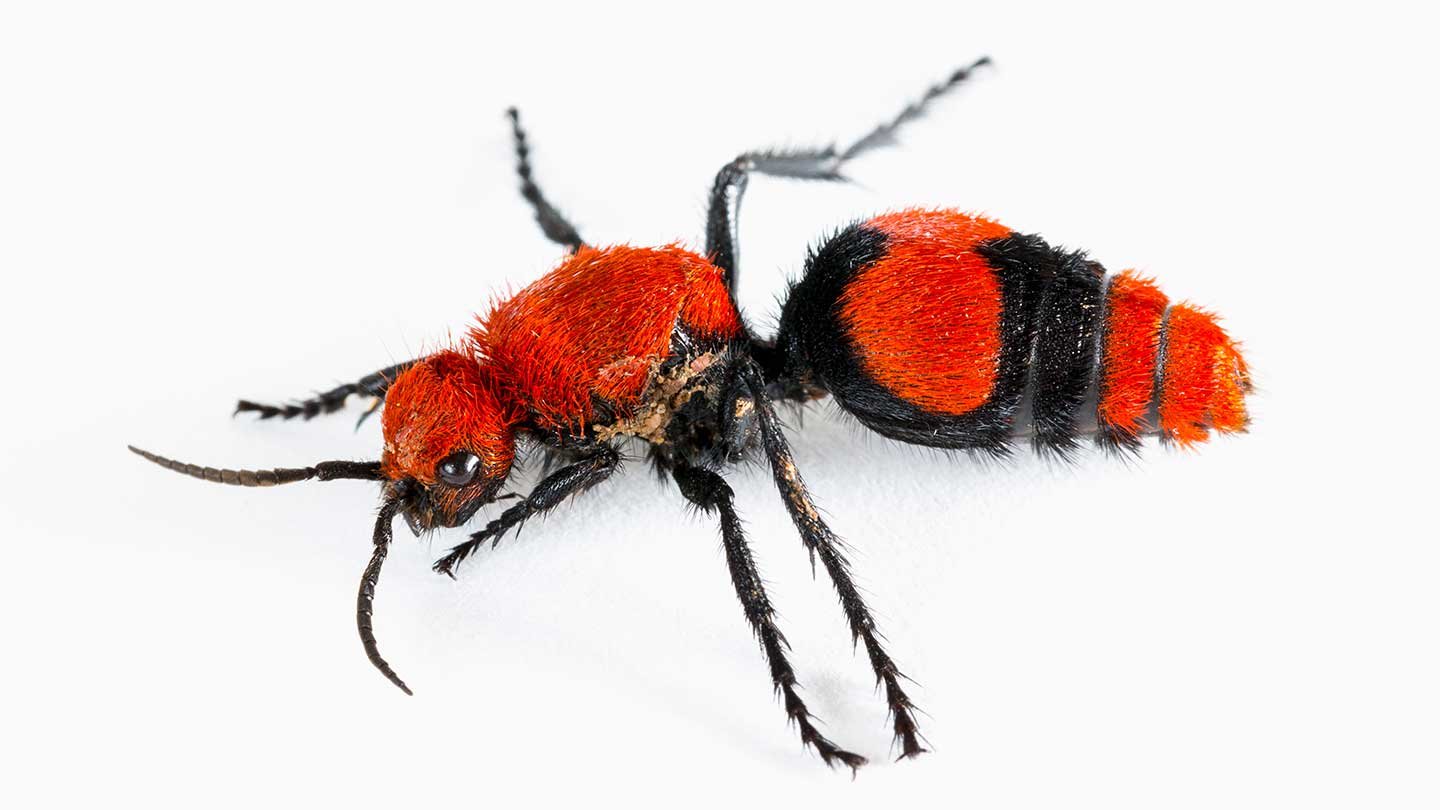
Few creatures can tangle with a velvet ant and walk away unscathed. These ground-dwelling insects are not ants, but parasitic wasps known for their excruciating stings.
Now researchers have discovered that the wasps don’t dole out pain the same way to all species. Different ingredients in their venom cocktail do the dirty work depending on who’s at the business end of a wasp’s stinger, researchers report online January 6 in Current Biology.
Velvet ants are among the most well-defended insects, wielding not just venom, but warning coloration and odor, an extremely tough exoskeleton and long stinger, and the ability to “scream” when provoked. In 2016, the entomologist Justin Schmidt wrote that getting stung by a velvet ant felt akin to “hot oil from the deep fryer spilling over your entire hand.” Scientists have found that other vertebrates react to the wasp’s sting too, including mammals, reptiles, amphibians and birds.
Other species are known to possess this type of “broad-spectrum” venom — a recent study identified a centipede with a venom cocktail that changes depending on whether the insect is acting as predator or prey. But it remains rare for one organism to be able to deter animals from so many different groups, says Lydia Borjon, a sensory neurobiologist at Indiana University Bloomington. In some cases, researchers have identified generalized venoms that zero in on molecular targets shared by different groups of creatures, passed down from when they last had a common ancestor in the distant past.
When Borjon and her colleagues authors first began experimenting with velvet ants, they suspected that might be the case for their venom too.
“If you’re trying to defend against many predators, then it would make sense for the venom to be generally effective by targeting something pretty ancient,” Borjon says. “Ultimately, what we found was different and surprising.”
The team collected venom from scarlet velvet ants (Dasymutilla occidentalis) and created synthetic versions of its 24 peptides, the main chemical components of the venom that induce pain or otherwise wreak cellular havoc. By testing the full cocktail and the individual peptides on larval fruit flies’ neurons, the researchers were able to pinpoint an insect-specific response to the most abundant peptide, called Do6a. It appears to target a type of neuron that reacts to noxious stimuli.
When the team tried the same experiment in mice, the synthetic venom still induced a painful response — but it wasn’t driven by Do6a. Instead, the pain appeared to be caused by two peptides less abundant in the venom, Do10a and Do13a, which prompt a broad and diffuse reaction across several types of mouse sensory neurons.
Taken together, Borjon says, the findings show that velvet ant venom induces pain in mammals — which as a group share similar pain pathways — via a more generalized mechanism, while the venom’s effect on insects is more tailored to a particular target.
This study is among the first to demonstrate multiple modes of action within a single venomn and is “an important ‘first pass,’ using some innovative techniques to explore an interesting question,” Sam Robinson, a toxinologist at the University of Queensland in Australia, says
But the findings may be more common than they seem, he says. There’s little scientific incentive to test most venoms’ effects in different creatures, particularly if a species is a prey specialist, “and so while it seems like this is something unique, it’s hard to say with certainty,” Robinson says.
The research also adds to another enduring mystery about the velvet ant: Why it seems to have so many weapons at its disposal. Despite their extensive defensive arsenal, nothing seems to consistently eat them, nor are velvet ants aggressive predators themselves, says Joseph Wilson, an evolutionary ecologist at Utah State University in Tooele.
The fact that the ant’s venom seems to “pack a real punch” against other insects suggests that interactions with some unknown insect predator — either in the past or the present — may be driving the evolution of these features, Wilson says. Or it could just be a happy accident of evolution. “As evolutionary biologists, we try to ascribe some purpose behind these adaptations, but sometimes evolution works in mysterious ways.”
Source link













Leave a Reply